Maven环境搭配及继承
1. Maven简单介绍
Apache Maven是个项目管理和自动构建工具,基于项目对象模型(POM)的概念。
作用:完成项目的相关操作,如:编译,构建,单元测试,安装,网站生成和基于Maven部署项目。
2、配置变量
1、MAVEN_HOME
2、M2_HOME
3、修改path添加maven相关路径
配置方式跟jdk有些类似,环境变量MAVEN_HOME和M2_HOME的值为maven的根目录、
然后在PATH环境变量里加入“%MAVEN_HOME%\bin;%M2_HOME%\bin;”即可
2.1、验证环境是否搭配成功
doc窗口执行命令“mvn –version”
看是否有maven的版本号
3、
修改“MAVEN_HOME\config”下的setting.xml文件,配置本地仓库。注意是:“E:/”而非“E:\”
例如:<localRepository>E:/mvn-repository</localRepository>
注1:<localRepository>标签在setting.xml文件的53行
注2:仓库的作用就是用来存放jar包的
注3:仓库的分类
中央仓库
公司仓库(也叫私人仓库或私服)
本地仓库
中央仓库(http://search.maven.org/,但一般使用另外一个网站:http://www.mvnrepository.com/)
公司仓库
本地仓库
公司里面还会有一个大仓库(本地)全公司使用
本地仓库程序员自己使用,私服全公司使用,中央仓库所有人用
注4:jar的查找顺序:本地仓库->私服->中央仓库
注5:换源“阿里云”
<?xml version="1.0" encoding="UTF-8"?>
<!-- Licensed to the Apache Software Foundation (ASF) under one or more contributor license agreements. See the NOTICE file distributed with this work for additional information regarding copyright ownership. The ASF licenses this file to you under the Apache License, Version 2.0 (the "License"); you may not use this file except in compliance with the License. You may obtain a copy of the License athttp://www.apache.org/licenses/LICENSE-2.0 Unless required by applicable law or agreed to in writing, software distributed under the License is distributed on an "AS IS" BASIS, WITHOUT WARRANTIES OR CONDITIONS OF ANY KIND, either express or implied. See the License for the specific language governing permissions and limitations under the License. -->
<!--| This is the configuration file for Maven. It can be specified at two levels:|| 1. User Level. This settings.xml file provides configuration for a single user,| and is normally provided in ${user.home}/.m2/settings.xml.|| NOTE: This location can be overridden with the CLI option:|| -s /path/to/user/settings.xml|| 2. Global Level. This settings.xml file provides configuration for all Maven| users on a machine (assuming they're all using the same Maven| installation). It's normally provided in| ${maven.conf}/settings.xml.|| NOTE: This location can be overridden with the CLI option:|| -gs /path/to/global/settings.xml|| The sections in this sample file are intended to give you a running start at| getting the most out of your Maven installation. Where appropriate, the default| values (values used when the setting is not specified) are provided.||-->
-<settings xsi:schemaLocation="http://maven.apache.org/SETTINGS/1.0.0 http://maven.apache.org/xsd/settings-1.0.0.xsd" xmlns:xsi="http://www.w3.org/2001/XMLSchema-instance" xmlns="http://maven.apache.org/SETTINGS/1.0.0">
<!-- localRepository| The path to the local repository maven will use to store artifacts.|| Default: ${user.home}/.m2/repository<localRepository>/path/to/local/repo</localRepository> -->
<localRepository>E:/mvn/mvn_repository</localRepository>
<!-- interactiveMode| This will determine whether maven prompts you when it needs input. If set to false,| maven will use a sensible default value, perhaps based on some other setting, for| the parameter in question.|| Default: true<interactiveMode>true</interactiveMode> -->
<!-- offline| Determines whether maven should attempt to connect to the network when executing a build.| This will have an effect on artifact downloads, artifact deployment, and others.|| Default: false<offline>false</offline> -->
<!-- pluginGroups| This is a list of additional group identifiers that will be searched when resolving plugins by their prefix, i.e.| when invoking a command line like "mvn prefix:goal". Maven will automatically add the group identifiers| "org.apache.maven.plugins" and "org.codehaus.mojo" if these are not already contained in the list.|-->
-<pluginGroups>
<!-- pluginGroup| Specifies a further group identifier to use for plugin lookup.<pluginGroup>com.your.plugins</pluginGroup> -->
</pluginGroups>
<!-- proxies| This is a list of proxies which can be used on this machine to connect to the network.| Unless otherwise specified (by system property or command-line switch), the first proxy| specification in this list marked as active will be used.|-->
-<proxies>
<!-- proxy| Specification for one proxy, to be used in connecting to the network.|<proxy><id>optional</id><active>true</active><protocol>http</protocol><username>proxyuser</username><password>proxypass</password><host>proxy.host.net</host><port>80</port><nonProxyHosts>local.net|some.host.com</nonProxyHosts></proxy> -->
</proxies>
<!-- servers| This is a list of authentication profiles, keyed by the server-id used within the system.| Authentication profiles can be used whenever maven must make a connection to a remote server.|-->
-<servers>
<!-- server| Specifies the authentication information to use when connecting to a particular server, identified by| a unique name within the system (referred to by the 'id' attribute below).|| NOTE: You should either specify username/password OR privateKey/passphrase, since these pairings are| used together.|<server><id>deploymentRepo</id><username>repouser</username><password>repopwd</password></server> -->
<!-- Another sample, using keys to authenticate.<server><id>siteServer</id><privateKey>/path/to/private/key</privateKey><passphrase>optional; leave empty if not used.</passphrase></server> -->
</servers>
<!-- mirrors| This is a list of mirrors to be used in downloading artifacts from remote repositories.|| It works like this: a POM may declare a repository to use in resolving certain artifacts.| However, this repository may have problems with heavy traffic at times, so people have mirrored| it to several places.|| That repository definition will have a unique id, so we can create a mirror reference for that| repository, to be used as an alternate download site. The mirror site will be the preferred| server for that repository.|-->
-<mirrors>
<!-- mirror| Specifies a repository mirror site to use instead of a given repository. The repository that| this mirror serves has an ID that matches the mirrorOf element of this mirror. IDs are used| for inheritance and direct lookup purposes, and must be unique across the set of mirrors.|<mirror><id>mirrorId</id><mirrorOf>repositoryId</mirrorOf><name>Human Readable Name for this Mirror.</name><url>http://my.repository.com/repo/path</url></mirror> -->
-<mirror>
<id>alimaven</id>
<name>aliyun maven</name>
<url>http://maven.aliyun.com/nexus/content/groups/public/</url>
<mirrorOf>central</mirrorOf>
</mirror>
</mirrors>
<!-- profiles| This is a list of profiles which can be activated in a variety of ways, and which can modify| the build process. Profiles provided in the settings.xml are intended to provide local machine- | specific paths and repository locations which allow the build to work in the local environment.|| For example, if you have an integration testing plugin - like cactus - that needs to know where| your Tomcat instance is installed, you can provide a variable here such that the variable is| dereferenced during the build process to configure the cactus plugin.|| As noted above, profiles can be activated in a variety of ways. One way - the activeProfiles| section of this document (settings.xml) - will be discussed later. Another way essentially| relies on the detection of a system property, either matching a particular value for the property,| or merely testing its existence. Profiles can also be activated by JDK version prefix, where a| value of '1.4' might activate a profile when the build is executed on a JDK version of '1.4.2_07'.| Finally, the list of active profiles can be specified directly from the command line.|| NOTE: For profiles defined in the settings.xml, you are restricted to specifying only artifact| repositories, plugin repositories, and free-form properties to be used as configuration| variables for plugins in the POM.||-->
-<profiles>
<!-- profile| Specifies a set of introductions to the build process, to be activated using one or more of the| mechanisms described above. For inheritance purposes, and to activate profiles via <activatedProfiles/>| or the command line, profiles have to have an ID that is unique.|| An encouraged best practice for profile identification is to use a consistent naming convention| for profiles, such as 'env-dev', 'env-test', 'env-production', 'user-jdcasey', 'user-brett', etc.| This will make it more intuitive to understand what the set of introduced profiles is attempting| to accomplish, particularly when you only have a list of profile id's for debug.|| This profile example uses the JDK version to trigger activation, and provides a JDK-specific repo.<profile><id>jdk-1.4</id><activation><jdk>1.4</jdk></activation><repositories><repository><id>jdk14</id><name>Repository for JDK 1.4 builds</name><url>http://www.myhost.com/maven/jdk14</url><layout>default</layout><snapshotPolicy>always</snapshotPolicy></repository></repositories></profile> -->
<!--| Here is another profile, activated by the system property 'target-env' with a value of 'dev',| which provides a specific path to the Tomcat instance. To use this, your plugin configuration| might hypothetically look like:|| ...| <plugin>| <groupId>org.myco.myplugins</groupId>| <artifactId>myplugin</artifactId>|| <configuration>| <tomcatLocation>${tomcatPath}</tomcatLocation>| </configuration>| </plugin>| ...|| NOTE: If you just wanted to inject this configuration whenever someone set 'target-env' to| anything, you could just leave off the <value/> inside the activation-property.|<profile><id>env-dev</id><activation><property><name>target-env</name><value>dev</value></property></activation><properties><tomcatPath>/path/to/tomcat/instance</tomcatPath></properties></profile> -->
</profiles>
<!-- activeProfiles| List of profiles that are active for all builds.|<activeProfiles><activeProfile>alwaysActiveProfile</activeProfile><activeProfile>anotherAlwaysActiveProfile</activeProfile></activeProfiles> -->
</settings>
4、创建maven项目
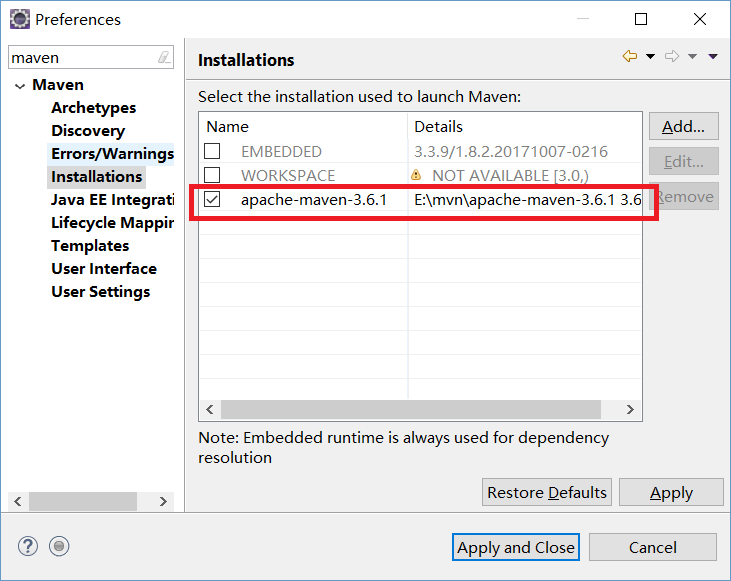
找到路径
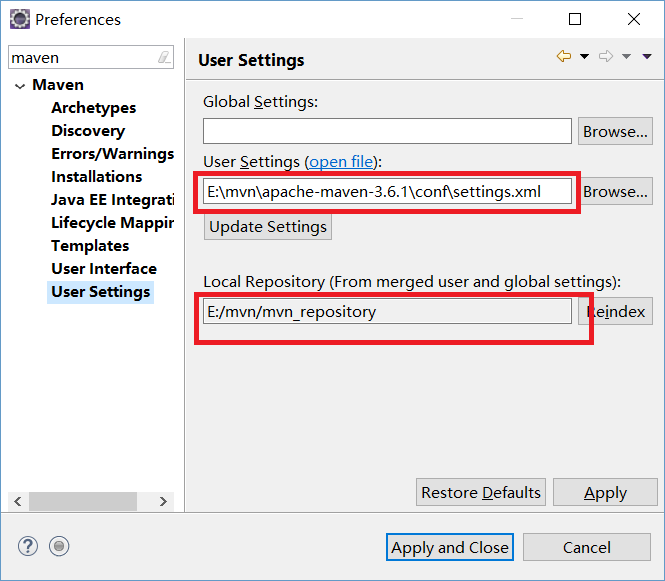
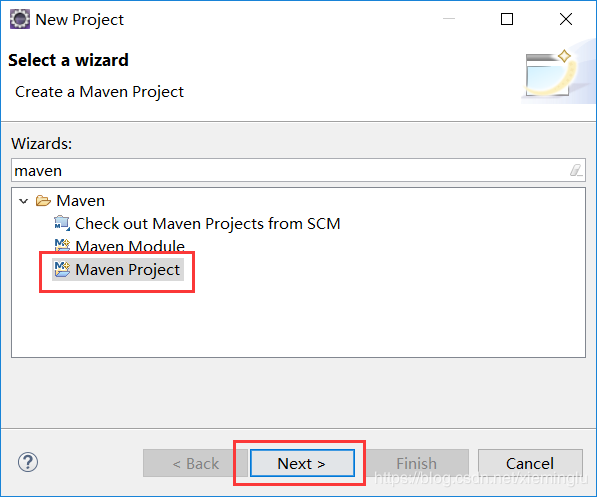
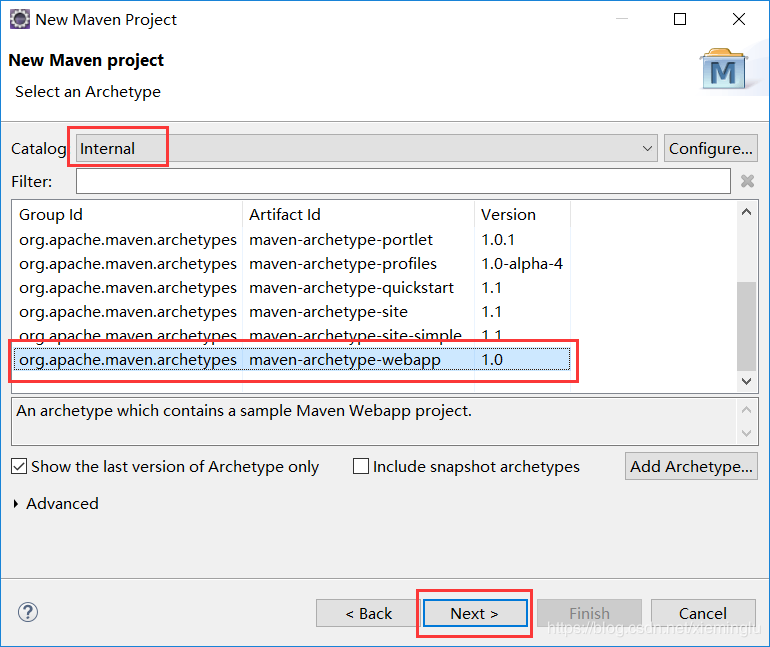
找到pom.xml
<project xmlns="http://maven.apache.org/POM/4.0.0" xmlns:xsi="http://www.w3.org/2001/XMLSchema-instance"
xsi:schemaLocation="http://maven.apache.org/POM/4.0.0 http://maven.apache.org/maven-v4_0_0.xsd">
<modelVersion>4.0.0</modelVersion>
<groupId>com.zking</groupId>
<artifactId>maven</artifactId>
<packaging>war</packaging>
<version>0.0.1-SNAPSHOT</version>
<name>maven Maven Webapp</name>
<url>http://maven.apache.org</url>
<dependencies>
<dependency>
<groupId>junit</groupId>
<artifactId>junit</artifactId>
<version>4.12</version>
<scope>test</scope>
</dependency>
<dependency>
<groupId>javax.servlet</groupId>
<artifactId>javax.servlet-api</artifactId>
<version>4.0.1</version>
<scope>provided</scope>
</dependency>
<dependency>
<groupId>org.apache.struts</groupId>
<artifactId>struts2-core</artifactId>
<version>2.5.13</version>
</dependency> <dependency>
<groupId>mysql</groupId>
<artifactId>mysql-connector-java</artifactId>
<version>5.1.44</version>
</dependency> <dependency>
<groupId>javax.servlet</groupId>
<artifactId>javax.servlet-api</artifactId>
<version>4.0.1</version>
<scope>provided</scope>
</dependency>
</dependencies>
<build>
<finalName>maven</finalName>
<plugins>
<plugin>
<groupId>org.apache.maven.plugins</groupId>
<artifactId>maven-compiler-plugin</artifactId>
<version>3.7.0</version>
<configuration>
<source>1.8</source>
<target>1.8</target>
<encoding>UTF-8</encoding>
</configuration>
</plugin> </plugins>
</build>
</project>
修改Project Facets
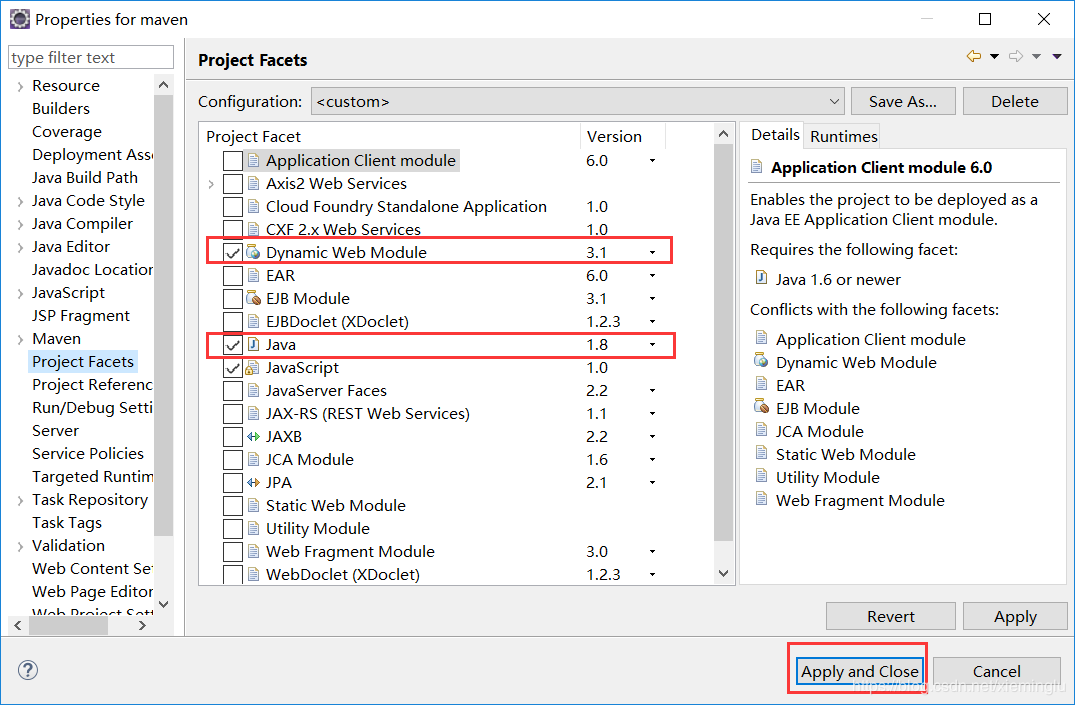
注:添加的配置archetypeCatalog=internal可加快项目创建速度
archetypeCatalog用来指定maven-archetype-plugin读取archetype-catalog.xml文件的位置:
internal——maven-archetype-plugin内置的
local——本地的,位置为~/.m2/archetype-catalog.xml
remote——指向Maven中央仓库的Catalog
<?xml version="1.0" encoding="UTF-8"?>
<web-app xmlns:xsi="http://www.w3.org/2001/XMLSchema-instance"
xmlns="http://xmlns.jcp.org/xml/ns/javaee"
xsi:schemaLocation="http://xmlns.jcp.org/xml/ns/javaee http://xmlns.jcp.org/xml/ns/javaee/web-app_3_1.xsd"
version="3.1">
<display-name>Archetype Created Web Application</display-name>
<filter>
<filter-name>struts2</filter-name>
<filter-class>org.apache.struts2.dispatcher.filter.StrutsPrepareAndExecuteFilter</filter-class>
</filter>
<filter-mapping>
<filter-name>struts2</filter-name>
<url-pattern>*.action</url-pattern>
</filter-mapping>
</web-app>
测试:
package com.test; import java.io.IOException;
import javax.servlet.ServletException;
import javax.servlet.annotation.WebServlet;
import javax.servlet.http.HttpServlet;
import javax.servlet.http.HttpServletRequest;
import javax.servlet.http.HttpServletResponse; /**
* Servlet implementation class MavenServlet
*/
@WebServlet("/MavenServlet")
public class MavenServlet extends HttpServlet {
private static final long serialVersionUID = 1L; /**
* @see HttpServlet#HttpServlet()
*/
public MavenServlet() {
super();
// TODO Auto-generated constructor stub
} /**
* @see HttpServlet#doGet(HttpServletRequest request, HttpServletResponse response)
*/
protected void doGet(HttpServletRequest request, HttpServletResponse response) throws ServletException, IOException {
doPost(request, response);
} /**
* @see HttpServlet#doPost(HttpServletRequest request, HttpServletResponse response)
*/
protected void doPost(HttpServletRequest request, HttpServletResponse response) throws ServletException, IOException {
System.out.println("搭建完成");
} }
4、添加的配置archetypeCatalog=internal可加快项目创建速度archetypeCatalog用来指定maven-archetype-plugin读取archetype-catalog.xml文件的位置:internal——maven-archetype-plugin内置的local——本地的,位置为~/.m2/archetype-catalog.xml
Maven环境搭配及继承的更多相关文章
- Maven配置以及环境搭配
1. Maven简单介绍 Apache Maven是个项目管理和自动构建工具,基于项目对象模型(POM)的概念. 作用:完成项目的相关操作,如:编译,构建,单元测试,安装,网站生成和基于Maven部署 ...
- 【Spring学习】在Spring+Maven环境中使用Junit Test
在Spring+Maven环境中使用Junit Test 前言 以前我是很讨厌写测试代码的,总觉得测试用例是测试人员写的,现在想想自己真是Too yuong too simple,接触开发多了之后发现 ...
- Maven环境下Poi的使用
Poi的使用方法,网上还是挺多的,官网也有教程. 附一个比较全的: http://www.cnblogs.com/vTree/archive/2011/11/30/2268721.html 需要说明的 ...
- Maven环境配置
1.下载Maven: 下载地址:http://maven.apache.org/ 2..安装 Maven 如果需要使用到 Maven ,必须首先安装 Maven , Maven 的下载地址在 Apac ...
- maven环境配置+eclipse环境配置
一 . (1),下载maven 有点类似于tomcat 解压后就可以用 ,不用安装 (2), 配置环境变量 在系统变量的path 中添加 E:\01Server\maven\bin 注意是bi ...
- Maven环境搭建
1,下载maven zip版 http://maven.apache.org/download.cgi 2,配置maven环境变量 (1) 新建MAVEN_HOME环境变量 E:\TOOLS\A ...
- maven 环境搭建
1.maven环境搭建 1)下载maven,http://maven.apache.org/download.cgi,到本地解压,然后配置环境变量 MAVEN_HOME:D:\software\apa ...
- Maven(一)maven环境搭建
1.下载maven安装文件 https://maven.apache.org/download.cgi#,根据自己的需要下载对应版本 2. 配置maven环境变量,和java环境变量配置方式类似. ...
- 搭建maven环境
有两种方式可以配置maven的环境配置,本人推荐使用第二种,即使用本地的maven安装文件,个人感觉这样可以方便管理下载jar包的存放位置,错误信息的输出等,可以在dos窗口中可以清晰看到,虽然比较麻 ...
随机推荐
- SSRS 关于日期参数的范围限制
在进行SSRS Report开发的时候,我们往往会有日期\时间范围限制的需求,但参数的报表参数并没有相关的事件\属性来设置. 所以,我们需要曲线救国. 这里要说的这种方法,仅支持Microsoft S ...
- Android 工程的创建
还望支持个人博客站:http://www.enjoytoday.cn 本章节主要介绍如何开始Android工程的创建和android开发过程中需要的一些简单的技巧和知识.首篇文章主要介绍如何开始And ...
- Bitbucket与git上传源码的使用方法
本文链接:https://blog.csdn.net/nomisshe/article/details/19625555 Bitbucket使用方法 一.软件及SSH keys: 由于我的Bitb ...
- 监控类shell脚本
1)开头加解释器:#!/bin/bash 2)语法缩进,使用四个空格:多加注释说明. 3)命名建议规则:变量名大写.局部变量小写,函数名小写,名字体现出实际作用. 4)默认变量是全局的,在函数中变量l ...
- 【Maven】如何使用pom.xml引入自定义jar包
这里我以这个jar包为例,aliyun-java-sdk-core-3.2.3.jar ,这是我在做手机短信服务用到的jar包 ①进入C盘下的maven仓库C:\Users\用户\.m2\reposi ...
- Pwn-level4
题目地址 https://dn.jarvisoj.com/challengefiles/level4.0f9cfa0b7bb6c0f9e030a5541b46e9f0 友情连接 https://www ...
- LeetCode 分治算法
分治算法:是将问题划分为一些独立的子问题,递归的求解个子问题,然后合并子问题的解而得到原问题的解. 分治算法步骤 step1 分解:将原问题分解为若干个规模较小,相互独立,与原问题形式相同的子问题: ...
- 剑指Offer-2.替换空格(C++/Java)
题目: 请实现一个函数,将一个字符串中的每个空格替换成“%20”.例如,当字符串为We Are Happy.则经过替换之后的字符串为We%20Are%20Happy. 分析: 题意明确,就是将一个字符 ...
- C++ string push_back()
函数功能: 在后面添加一项 vector头文件的push_back函数,在vector类中作用为在vector尾部加入一个数据.string中的push_back函数,作用是字符串之后插入一个字符. ...
- oracle序列相关
一. oracle中如何实现一列的规律增长呢(通常是指number类型的列)? 这就需要借助序列来实现了; 1. 什么是序列? 可以理解为序列是一组sql语法创建出来的函数, 该函数中定义 好 ...
